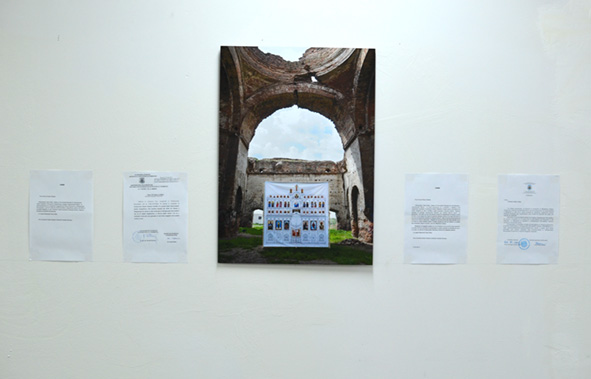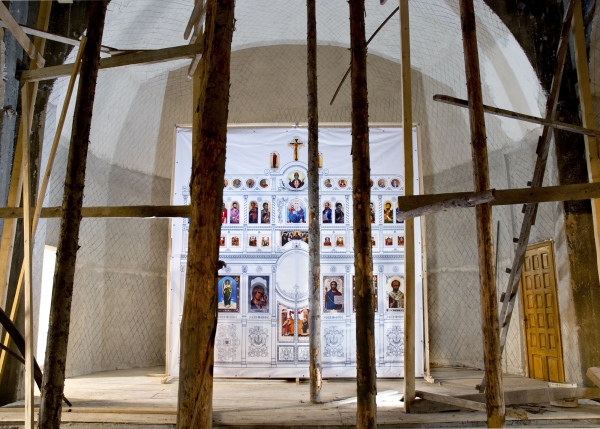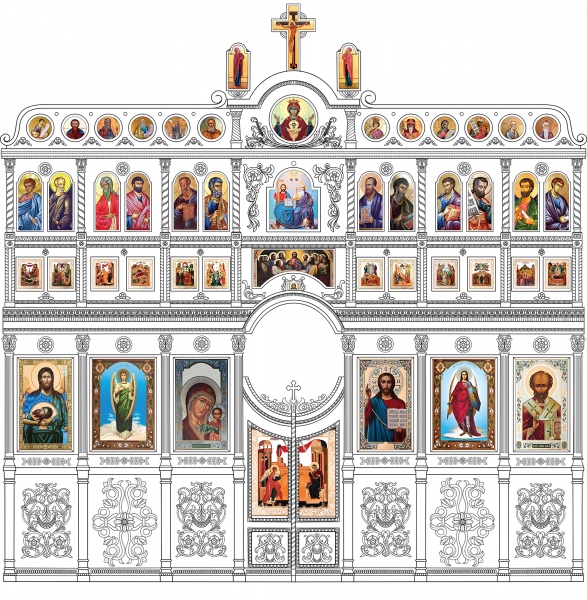-
The word „Catapeteasma” (iconostasis) is of Greek origin and it derives from a verb that means “ to unroll a piece of cloth”. We find the iconostasis as a curtain at the altar in The Old and The New Testament of the Holly Bible. In the old Christian churches this curtain closed the entrance into the altar at the small grating that separated the altar from the nave of the church. If the term iconostasis became used more often in the Russian churches, in the Greek and Romanian churches remained in use, beside the term “catapeteasma” also the term “tampla” that derives from the word temple.
The work “Tampla” intends to debate the iconographic representation of the contemporary Romanian Orthodox Church. The Archdioceses of Romania are promoting through their shops an iconographical representation that exceeds in ornaments that departs in a great sense from the philosophy of the byzantine icon. The icon painting art is symbolic; the world represented through the icon is oriented towards everlastingness. With their simplicity and the schematic drawing of the portraits, with their figures silhouettes, the saints depicted in the icons, as well as on the walls of the churches, give the impression of serenity detached from this earthly world. The icons I photographed and used in my work are pretty far from this description. Through their quality as a product (photographic print glued on a chipboard), through their flashy, excessive ornamentation, as well as through the way the saints are depicted, these products shepherded by the Romanian Church, resemble to kitschy tokens from a flea market.
In a period when the photographic print becomes a cult object, my proposal is to replace all together the wooden iconostasis with a copy of it. The work “ Tampla” could be considered as a quotation to the early types of iconostasis, a cloth that separated the altar from the rest of the church, it’s a simplification in the technical terms of today, of the furniture that enters in the construction of an Orthodox church. With this work I make a proposal of a new religious item. A cheap one with photographed icons not painted ones, with printed ornaments instead of carved ones. A solution that fits the desire of the Orthodox Church authorities who are looking for good priced products that mimic the cult object of the past.
The locations I photographed the work in, are also debating the interest or the Romanian Orthodox Church in building new churches instead of investing funds in the conservation of the religious historical monuments in its heritage.



